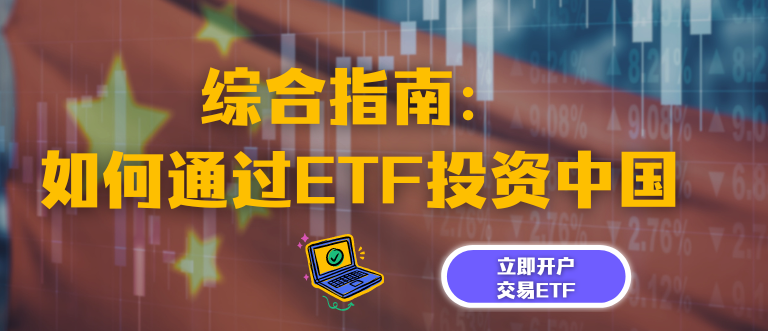Fiat money
Table of Contents
Fiat money
Fiat money has replaced cash as the primary form of payment for most people today. The only reason fiat money has value is because the government has declared it an acceptable form of payment. In contrast to commodity money, which derives its own intrinsic worth from the material it is composed of (such as gold or silver), fiat money isn’t backed by any tangible commodity. It lowers production costs and increases government control over the economy, among other benefits. Drawbacks include inflation and the necessity for a stable and effective government.
What is fiat money?
Fiat money is money that has no inherent value; instead, it is valued by decree from the government. It is recognised as the legal currency used for transactions within a particular jurisdiction.
The economy’s resilience and the public’s faith in the issuing authority maintain the worth of fiat money. Governments may control monetary policy with more flexibility while using fiat money.
However, because of its volatility and dependence on variables like inflation, public confidence, and economic stability, regulating it is essential to maintaining a nation’s financial stability.
Understanding fiat money
Before flexible currencies, most currencies were backed by physical assets. The money may be sold for a certain amount of gold or silver. This transaction might happen. After switching to fiat money, governments significantly influenced their monetary systems and economic responses.
Introduced as a substitute for representative and commodity money, the value of fiat money is determined by supply and demand. As opposed to representative money, which is a claim on a redeemable product, commodity money is made of precious metals like gold and silver.
Fiat currencies include the US dollar (US$), the euro, and the majority of other world currencies. The most common fiat currency substitute is commodity money, secured by a physical item. People might change one currency into another, such as the US$, formerly backed by a fixed quantity of gold.
History of fiat money
Gold and silver were used to back money when it was initially formed, making it more valuable and secure and raising its worth. However, paper money increased throughout the 1900s as national monetary systems improved.
Nixon terminated the gold standard via presidential order in 1971. Gold couldn’t be swapped for dollars after this shift. The US Federal Reserve was the only body supporting the US dollar. It was a significant advance toward pure money.
The Latin origin of the phrase “fiat” is “let it be done.” Although fiat money has been around for a while, it became more common in the modern age after countries abandoned the gold standard, which guaranteed currency values with physical gold reserves. Governments now have greater freedom in controlling their monetary and economic policies due to the switch to fiat money.
Since then, several significant currencies have moved to cash transactions, which allows the government to control monetary policy and respond quickly to economic changes. Fiat money has expanded government power, but managing the economy and inflation is harder.
Advantages and disadvantages of fiat money
Advantages:
- Central banks have more control over the economy with fiat money
Central banks utilise monetary techniques to adjust the money supply and maintain economic stability. They can limit prices and boost the economy.
- Fiat money is cheaper to produce than commodity-backed currency
Fiat money may be more affordable than commodity-backed currencies, which need precious metal stockpiles. Making fiat money is more inexpensive, lowering currency generation and administration expenses.
- Governments have flexibility with fiat money
They can respond faster to economic issues and change policies to address financial crises, recessions, and unemployment. This hobby is allowed in paper-money countries.
Disadvantages
- Fiat money isn’t foolproof for economic protection
Even though the government has greater control over monetary policy with fiat money, economic downturns, currency crises, and unstable financial circumstances may affect it. This is true even if the government controls paper money policy more. Governments must carefully manage their monetary systems to avoid inflation and currency depreciation.
- There’s a risk of creating economic bubbles with fiat money
Central banks may modify the money supply in addition to interest rates. This power may cause economic bubbles. Examples include asset market bubbles and fast credit growth. Both types of bubbles may cause recessions and other financial problems.
- It can lead to inflation
Cash is risky since its value is projected to drop. Governments creating too much money causes this problem. Money loses value, raising goods and service prices. Because of inflation, money loses value, which may hurt buyers, savers, and spenders.
Example of fiat money
Digital currencies on paper include the US dollar, euro, British pound, Japanese yen, and many more. Consumers and companies trust the governments and central banks that issue these currencies, which may explain their high value.
Many people know Zimbabwe’s hyperinflation in the early 2000s as a risk of paper money. Given Zimbabwe’s fragile economy, the government printed money at a troubling rate. This move caused the national currency to plummet quickly.
The steep decrease in the Zimbabwean dollar raised expenditures, where prices rose sharply. The economic turmoil caused many individuals to face new obstacles.
This example highlights the importance of being careful with one’s financial resources and the risks of creating too much money or enacting price-raising legislation. Fiat money must be handled carefully to prevent hyperinflation and other problems.
Frequently Asked Questions
Fiat money created by the government has no value beyond what individuals estimate. Since it has no assets, its functioning depends on the stability of the economy and the government.
Governments use fiat money to pay taxes. People are more interested in purchasing money, and the idea that the government will ensure its stability boosts its value.
Modern economics favour fiat money for its autonomy and control. Compared to currencies backed by commodities, Fiat money enables governments and central banks to modify monetary policy in response to changing economic conditions. This adaptability makes implementing policies like quantitative easing and interest rate modifications easier to manage inflation, boost GDP, and stabilise economies.
Gold-backed money and Bitcoin are alternatives to government-issued money. However, these alternative solutions are less common or authorised in business.
If enough counterfeit money is printed, hyperinflation may occur. Growth should be fostered despite low inflation. People feel hyperinflation more when there is political or business upheaval than when generating money. People seldom generate hyperinflation by earning money.
Related Terms
- Strong order book
- Trailing Stops
- Exchange Control
- Relevant Cost
- Dow Theory
- Hyperdeflation
- Hope Credit
- Futures contracts
- Human capital
- Subrogation
- Qualifying Annuity
- Strategic Alliance
- Probate Court
- Procurement
- Holding company
- Strong order book
- Trailing Stops
- Exchange Control
- Relevant Cost
- Dow Theory
- Hyperdeflation
- Hope Credit
- Futures contracts
- Human capital
- Subrogation
- Qualifying Annuity
- Strategic Alliance
- Probate Court
- Procurement
- Holding company
- Harmonic mean
- Income protection insurance
- Recession
- Savings Ratios
- Pump and dump
- Total Debt Servicing Ratio
- Debt to Asset Ratio
- Liquid Assets to Net Worth Ratio
- Liquidity Ratio
- Personal financial ratios
- T-bills
- Payroll deduction plan
- Operating expenses
- Demand elasticity
- Deferred compensation
- Conflict theory
- Acid-test ratio
- Withholding Tax
- Benchmark index
- Double Taxation Relief
- Debtor Risk
- Securitization
- Yield on Distribution
- Currency Swap
- Overcollateralization
- Efficient Frontier
- Listing Rules
- Green Shoe Options
- Accrued Interest
- Market Order
- Accrued Expenses
- Target Leverage Ratio
- Acceptance Credit
- Balloon Interest
- Abridged Prospectus
- Data Tagging
- Perpetuity
- Hybrid annuity
- Investor fallout
- Intermediated market
- Information-less trades
- Back Months
- Adjusted Futures Price
- Expected maturity date
- Excess spread
- Quantitative tightening
- Accreted Value
- Equity Clawback
- Soft Dollar Broker
- Stagnation
- Replenishment
- Decoupling
- Holding period
- Regression analysis
- Wealth manager
- Financial plan
- Adequacy of coverage
- Actual market
- Credit risk
- Insurance
- Financial independence
- Annual report
- Financial management
- Ageing schedule
- Global indices
- Folio number
- Accrual basis
- Liquidity risk
- Quick Ratio
- Unearned Income
- Sustainability
- Value at Risk
- Vertical Financial Analysis
- Residual maturity
- Operating Margin
- Trust deed
- Profit and Loss Statement
- Junior Market
- Affinity fraud
- Base currency
- Working capital
- Individual Savings Account
- Redemption yield
- Net profit margin
- Fringe benefits
- Fiscal policy
- Escrow
- Externality
- Multi-level marketing
- Joint tenancy
- Liquidity coverage ratio
- Hurdle rate
- Kiddie tax
- Giffen Goods
- Keynesian economics
- EBITA
- Risk Tolerance
- Disbursement
- Bayes’ Theorem
- Amalgamation
- Adverse selection
- Contribution Margin
- Accounting Equation
- Value chain
- Gross Income
- Net present value
- Liability
- Leverage ratio
- Inventory turnover
- Gross margin
- Collateral
- Being Bearish
- Being Bullish
- Commodity
- Exchange rate
- Basis point
- Inception date
- Riskometer
- Trigger Option
- Zeta model
- Racketeering
- Market Indexes
- Short Selling
- Quartile rank
- Defeasance
- Cut-off-time
- Business-to-Consumer
- Bankruptcy
- Acquisition
- Turnover Ratio
- Indexation
- Fiduciary responsibility
- Benchmark
- Pegging
- Illiquidity
- Backwardation
- Backup Withholding
- Buyout
- Beneficial owner
- Contingent deferred sales charge
- Exchange privilege
- Asset allocation
- Maturity distribution
- Letter of Intent
- Emerging Markets
- Consensus Estimate
- Cash Settlement
- Cash Flow
- Capital Lease Obligations
- Book-to-Bill-Ratio
- Capital Gains or Losses
- Balance Sheet
- Capital Lease
Most Popular Terms
Other Terms
- Market maker
- Direct market access
- Deficit interest
- Economic calendar
- EPS forecast
- Options expiry
- Adjusted distributed income
- International securities exchanges
- Settlement currency
- Federal funds rate
- Active Tranche
- Convertible Securities
- Synthetic ETF
- Physical ETF
- Initial Public Offering
- Buyback
- Secondary Sharing
- Bookrunner
- Notional amount
- Negative convexity
- Jumbo pools
- Inverse floater
- Forward Swap
- Underwriting risk
- Reinvestment risk
- Final Maturity Date
- Payment Date
- Secondary Market
- Margin Requirement
- Mark-to-market
- Pledged Asset
- Yield Pickup
- Subordinated Debt
- Treasury Stock Method
- Stochastic Oscillator
- Bullet Bonds
- Basket Trade
- Contrarian Strategy
- Notional Value
- Speculation
- Stub
- Trading Volume
- Going Long
- Pink sheet stocks
- Rand cost averaging
- Sustainable investment
- Stop-limit sell order
- Economic Bubble
- Ask Price
- Constant prepayment rate
Know More about
Tools/Educational Resources
Markets Offered by POEMS
Read the Latest Market Journal

继前一篇我们介绍了越南市场后,接下来我们将介绍泰国市场,泰国的表现一样引人瞩目。 受结构性问题影响,相较于菲律宾、马来西亚、印度尼西亚和越南,2023年,泰国全年GDP增幅远低于其他国家。泰国2023年GDP同比2022年增长1.9%,低于市场预测的2.5%。 2023年,中国-东盟自贸协定零关税给泰国带来了直接且沉痛的打击。由于消费疲软、贸易壁垒等政策影响,产能过剩,导致大量低价进口中国商品涌入,使得2023年泰国与东盟9国的总贸易额出现了3年来的首次下滑,其总贸易额为4万亿泰铢(约1489亿新元)。由于巨大的成本价格差异,其中泰贸易逆差扩大至1.29万亿泰铢(约480亿新元)。其中,小家电、蔬果、箱包和服装行业处境最为艰难。 尽管如此,旅游业的复苏增长带动了非农业产业的增长。政府数据显示,2023年来访泰国的总人数达3.15亿人次,较去年增长40.3%。其中,国际游客超过2800万人次,马来西亚和中国为最大客源。随着泰国对中国和哈萨克斯坦实施免签政策和其他活动措施,预计2024年将带来更多游客,推动泰国旅游业的复苏进程,并力争实现2024年旅游营业收入达到3.5亿泰铢(约0.12亿新元)的目标。 热销股票 1. ADVANCED INFO SERVICE PUBLIC CO., AIS,AIS通信(ADVANC.TH) AIS通信是泰国的最大移动运营商,主要经营三大业务线,包括移动业务、AIS Fibre品牌下的高速家庭宽带业务,以及企业业务。同时AIS也提供多样化的数字生活服务。AIS通过数字智能基础设施、跨行业合作和人力资本与可持续发展这三方面,致力于“成为泰国最受尊敬的认知科技公司”的愿景。 (来源:AIS2023财年年报)...

指数差价合约是区别于投资个股、指数期货或交易所交易基金(ETF)的一种热门替代品,因为该工具允许您获得特定指数的风险投资组合,并从柜台价格走势中获益,无论做多或做空。此外,由于差价合约的杠杆特性,交易者只需拿出合约价值的一小部分作为初始合约的抵押品即可启动一笔合约。这样,交易者就可以方便快捷地进行整个市场的交易。 本期重点摘要: 股票指数只是一组资产的集合,它概括了股市中某一行业板块的表现。许多此类指数根据不同的标准包含和/或排除某些股票。 指数差价合约有助于利用构成单一指数的各种股票分散您的投资组合、实现投资组合多样化。这也有助于避免 “选择悖论”:指数帮助您决定投资哪些股票。 最重要的是,指数差价合约让交易者获得对指数的接触,而不用购买组成指数的个股。这种具有成本效益的策略让您只需交易指数的价格变化,而无需拥有相关指数本身。 什么是股票指数? 当人们说 “今天市场上涨了 “或 “市场下跌了 “时,你会不会好奇,分析师是如何评估整个市场? 这很简单,他们只需分别将按照今天的报价和昨天的报价购买所有公司所需的金额相加。两相比较下,如果发现今天的数字大于前一天的数字,那么我们就知道今天的市场上涨了,反之亦然。然而,数字的汇总和对比可能会很繁琐和麻烦。创建指数就是为了方便测量。 因此,”股票指数 “一词指的是一组股票(或其他资产)的集合,它提供了股票市场特定部分表现的概况。该指数被用作一个替代指标,用来衡量市场在特定时间段内的涨跌情况,比如以上例子中所描述的逐日指数。...

本文旨在为中级外汇交易者提供必要的信息和知识。它将涵盖我们上一篇文章 “五分钟看懂世界上最活跃的市场-外汇差价合约(FX CFD)...

解锁台湾股市的投资潜力!深入了解由强大的技术驱动型经济推动的股票市场,2023 年机械和电气设备将占出口的 69%。在政治稳定、投资者友好的法规和健全的法律框架下,探索台积电和富士康等全球顶级企业。台湾股市值得称赞的历史表现和在国际贸易中的的重要性使其更具吸引力。在这个科技实力雄厚、经济稳定、充满活力的股票市场中,抓住增长机遇!

了解外汇市场 外汇交易市场又称外汇市场,是一个买卖货币的全球性金融市场。它是全世界规模最大、流动性最强的金融市场,每日交易量超过 6 万亿美元。但外汇市场有一个重要却常被忽视的一点,就是它受交易心理的影响。在本文中,我们将探讨外汇市场的复杂性,还有把重点放在交易心理与传统交易策略共同发挥的关键作用...

五分钟看懂世界上最活跃的市场 -外汇差价合约(FX CFD)
外汇交易市场俗称外汇或外汇市场,是全球金融市场的支柱。它是世界上最活跃的市场,2022 年 4 月,全球交易额达到创纪录的每天 7.5 万亿美元[1] 。这个活跃的市场为交易者提供了利用货币价格波动赚取利润的机会。在本文中,我们将解释外汇市场的基本原理,助您了解其投资机制。 什么是外汇? 外汇市场是一个分散的全球市场,世界上所有货币都在这里进行交易...






















